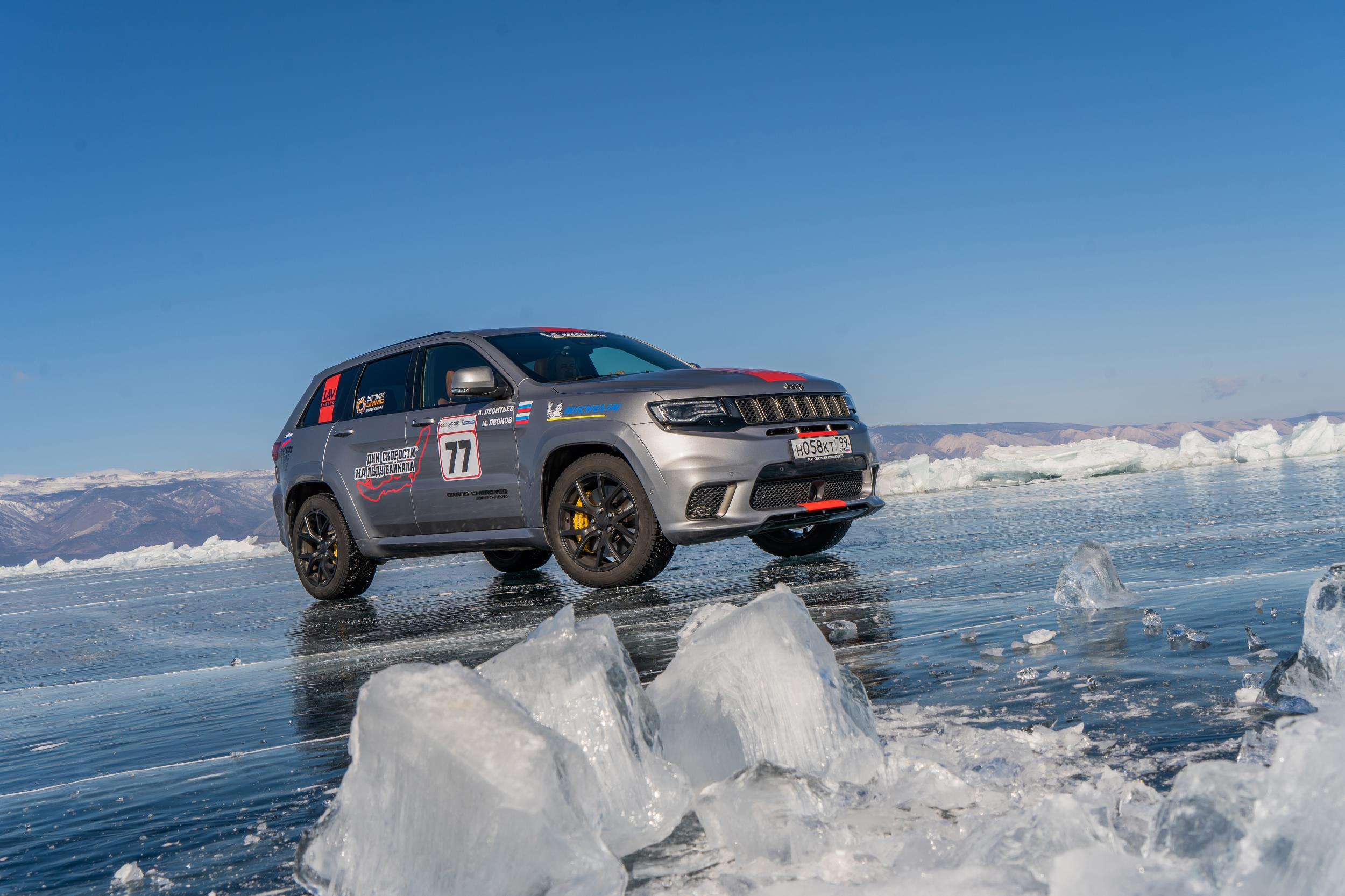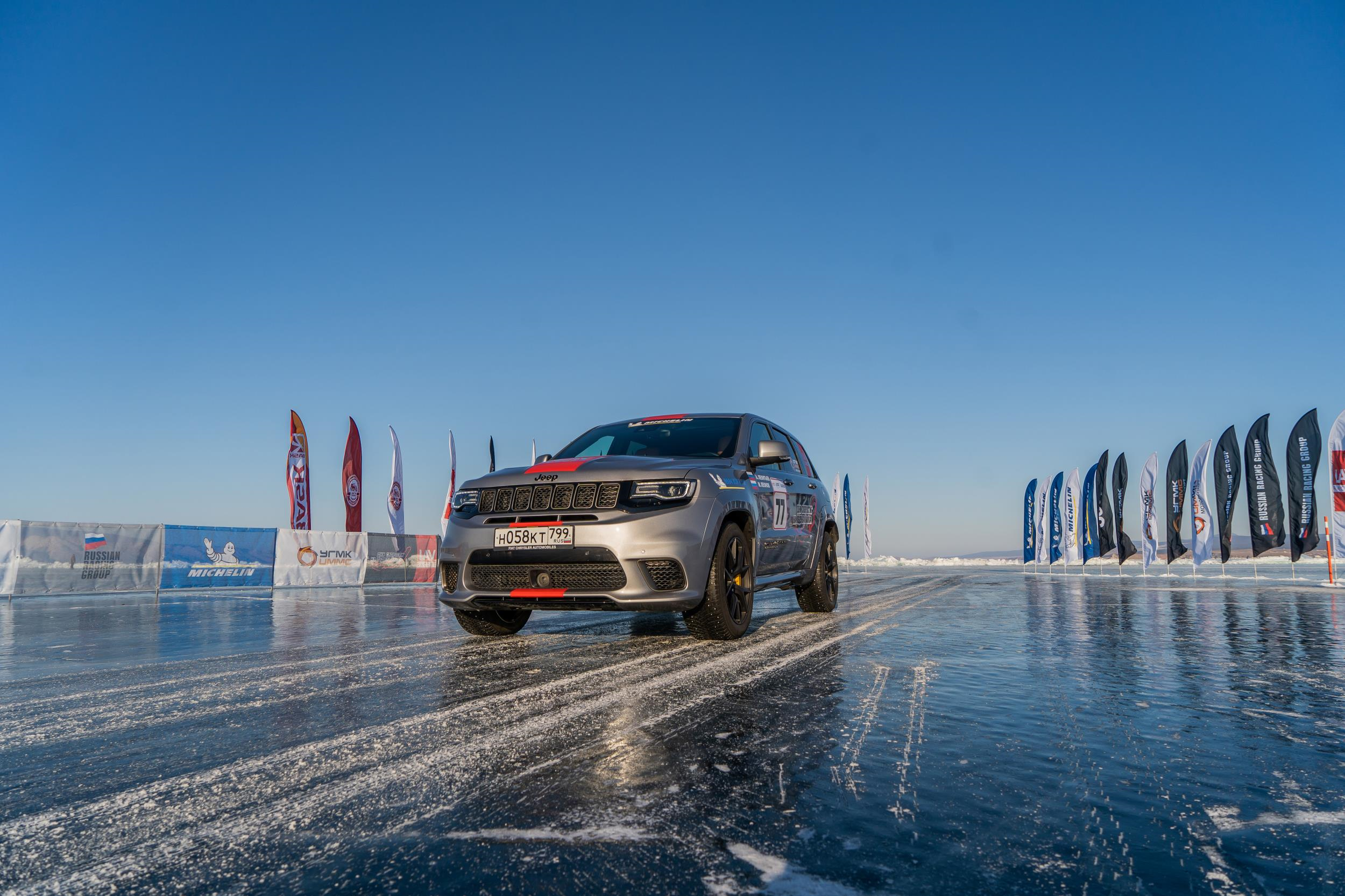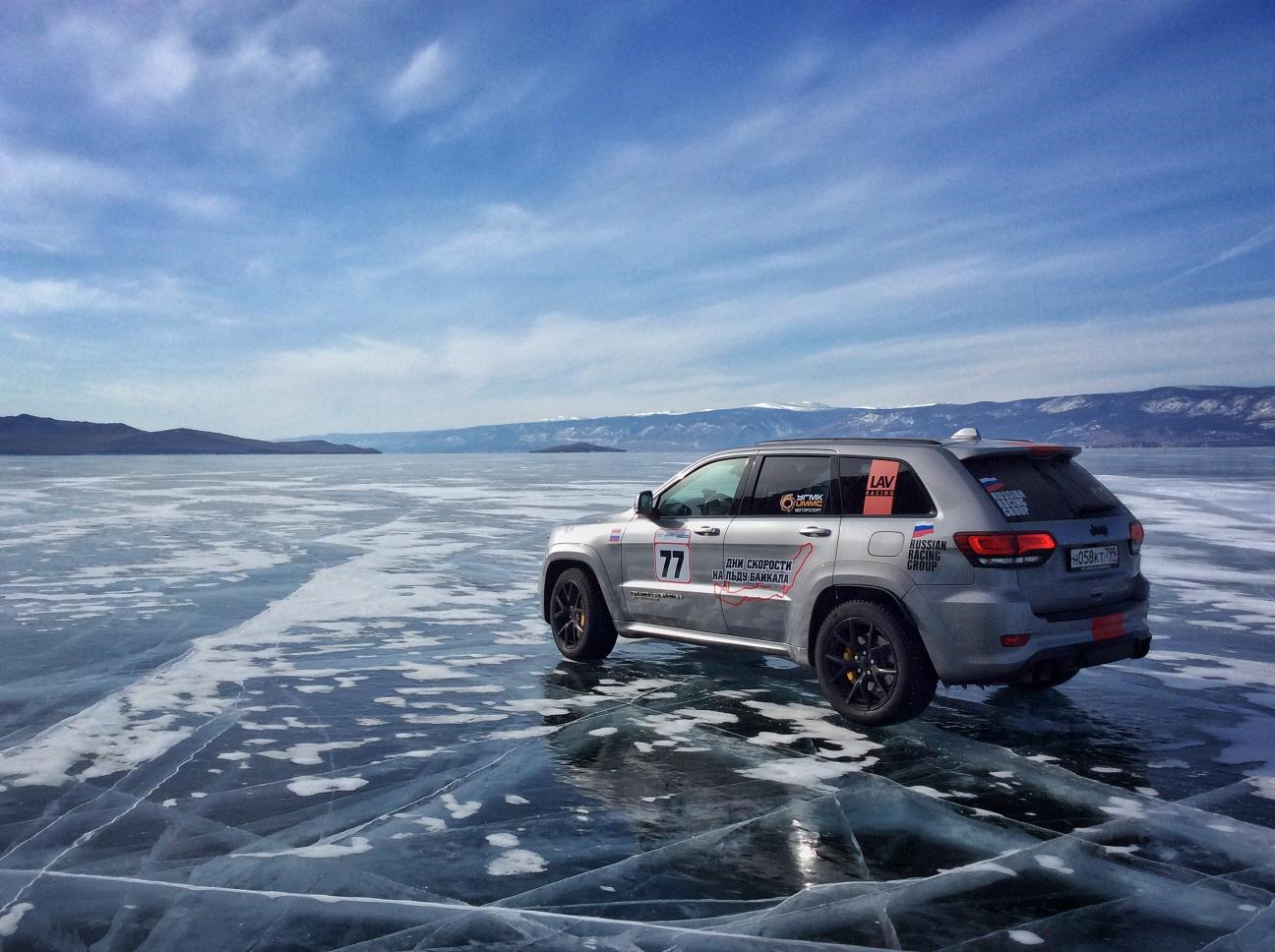According to data confirmed by the Russian Automobile Federation (RAF), the Jeep Grand Cherokee Trackhawk was able to achieve an average speed, over a distance of 1km, in excess of 160mph, with a rolling start and an average speed commencing from standstill of more than 60mph. In fact, the maximum speed attained, according to the GPS trackers, was 173.98mph.

The Jeep Grand Cherokee Trackhawk can now back up its claim as the most powerful mass-produced SUV in the world. Beneath its bonnet is a 710bhp 6.2-litre V8 petrol engine. Despite its impressive dimensions, the Trackhawk version reaches 0-60mph in just 3.4s, with a maximum speed of 180mph.
Participation in this event means a serious load on the vehicle’s braking system due to the unique conditions of the Baikal ice. In sunlight, the surface of the lake is covered in a film of water, which reduces grip on the surface. Even in such adverse conditions, the Trackhawk demonstrated excellent braking results thanks to its Brembo brake system, which uses dinner-plate sized, ventilated front discs.

Traction was provided by the Jeep Quadra-Trac on-demand four-wheel-drive system, which includes an electronic limited-slip rear differential and a single-speed active transfer case, while the Selec-Track system (with five dynamic modes - Auto, Sport, Track, Snow and Tow) allows the driver to choose an ideal vehicle setting that meets any requirement and ambient conditions, including driving on sheet ice.
Before the race, unnecessary items were removed from the Jeep and a sufficient level of fuel was pumped into its fuel tank. Each of the runs was conducted in line with the regulations of the Russian Fédération Internationale de l’Automobile (FIA). The maximum average speed was counted over a distance of 1km, with the aforementioned rolling start; the drivers had to cover 1km in the middle of the track at the maximum possible speed and 1km from a standing start. The rules also dictated that the timing gates needed to be passed in both directions, with the judges calculating the average result. To allow for the required acceleration and braking, the total length of the course was 12km (it is an immense expanse of frozen fresh water). The absolute maximum speed achieved in each run is included in the official Book of Records of Russia.

The Speed Days of the Baikal Ice festival were first held in 2011. Over eight years, more than 20 speed records have been set on the Baikal ice, in different categories of vehicles. All runs are conducted traditionally on natural bare ice and preparation of the route is limited to the removal of obstacles (packed snow, hummocks and so on) that might affect the safety of drivers and judges. Achievements are recorded by licensed judges from the Russian Automobile Federation, using timekeeping equipment approved by the FIA.
